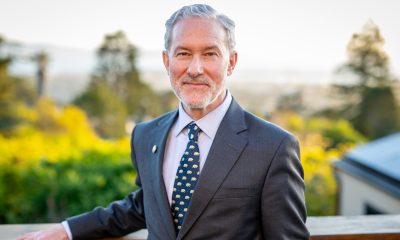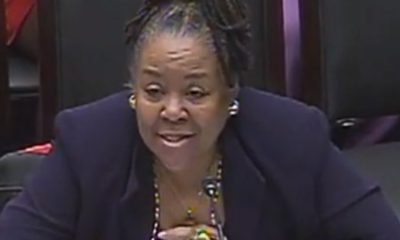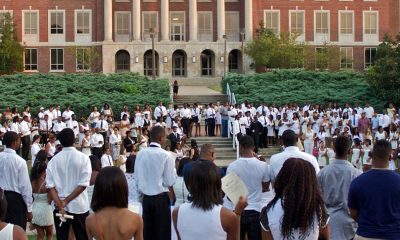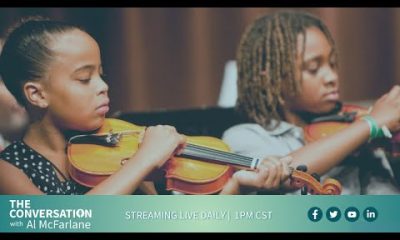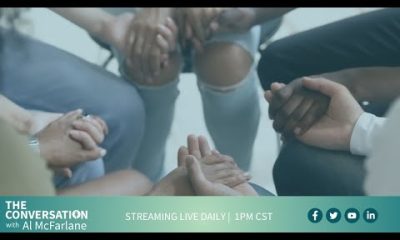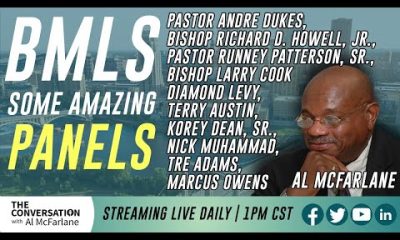#NNPA BlackPress
PRESS ROOM: An Exclusive Special Edition: 2024 GMC HUMMER EV Omega Edition Has Landed
NNPA NEWSWIRE – GMC reveals the 2024 HUMMER EV Omega Edition, a special edition for the 2024 HUMMER EV 3X Pickup and SUV. Featuring Neptune Blue Matte exterior paint color and blacked out accents, the Omega Edition will be a limited run and sure to stand out in any crowd.
The post PRESS ROOM: An Exclusive Special Edition: 2024 GMC HUMMER EV Omega Edition Has Landed first appeared on BlackPressUSA.

MIAMI – The world’s first all-electric super truck will soon include an exclusive special edition set to send desirability into orbit. Today, GMC revealed the 2024 HUMMER EV Omega Edition, a limited edition vehicle with interstellar style to stand out on city streets and capability to conquer extreme off-road trails. Further elevating the HUMMER EV lineup, the eye-catching Omega Edition features a limited Neptune Blue Matte1 exterior paint color that sets HUMMER EV among the stars.
“The HUMMER EV is one of the hottest vehicles on the market today, and it just got even more desirable with the striking and strictly limited Omega Edition,” said Duncan Aldred, global vice president, Buick-GMC. “With traffic-stopping design provided by the exclusive, space inspired Neptune Blue Matte1 exterior color with premium blacked-out details, the HUMMER EV Omega Edition will be a standout on every city street while continuing to deliver the capability and groundbreaking performance our customers expect from GMC.”
The Omega Edition will be available exclusively on the 3X trim for both the 2024 HUMMER EV Pickup and SUV. Features standard on the special edition include:
- Limited edition Neptune Blue Matte1 exterior paint color
- Extreme Off-Road Package
- Black exterior badges
- Transparent Sky Panels
- Exclusive 18-inch gloss black beadlock-capable wheels with Carbon Flash trim ring
- Exclusive high lux carpet flooring insert
- MultiPro tailgate audio speaker system by Kicker (Pickup only)
- Black beadlock mounted spare wheel (SUV only)
- Exclusive Neptune Blue Matte1 spare tire cover (SUV only)
The Omega Edition evolves the HUMMER EV story and its space-themed inspiration. A theme that influenced the HUMMER EV’s design and engineering teams from inception to production as they created this ‘moonshot’ vehicle, with the endless expanses of space reflecting the boundless inspiration for what was possible with the world’s first electric supertruck. Now with Omega Edition, designers took inspiration from deep into the solar system; the Blue Planet, to create the stunning and unique Neptune Blue Matte1 paint that sets this latest HUMMER EV apart.
In terms of hardware, the Extreme Off-Road Package for both the HUMMER EV Pickup and SUV includes UltraVision with underbody camera views2, additional skid plates and rocker protection with built-in assist steps, 18-inch wheels and 35-inch Mud Terrain tires.
The SUV will be offered with a standard 20-module battery. The Pickup will be offered with a 24-module battery option.
Pricing for the HUMMER EV Omega Edition Pickup starts at $149,9953 for the 24-module battery. The SUV with 20-module battery will start at $139,995 3. Customer deliveries are expected to begin in the first half of 2024. The Omega Edition will initially be available for current HUMMER EV 3X Pickup and SUV reservation holders.
The GMC HUMMER EV Omega Edition SUV will be on display at the upcoming “HUMMER House” activation in the Design District during the Miami Grand Prix weekend. Invited attendees will experience 0-60 mph sprints in about 3.5 seconds4 through Watts to Freedom5 runs in the SUV on a closed course.
The 2023 GMC HUMMER EV Pickup and 2024 GMC HUMMER EV SUV are built at GM’s Factory ZERO Detroit-Hamtramck Assembly Center6 — a nearly 40-year-old facility repurposed and retooled with a $2.2 billion investment devoted to EV production. Factory ZERO will also build the GMC Sierra EV Denali Edition 17.
1Special care required for matte paint. See owner’s manual for more details.
2Safety or driver assistance features are no substitute for the driver’s responsibility to operate the vehicle in a safe manner. Read the vehicle’s owner’s manual for important feature limitations and information.
3The Manufacturer’s Suggested Retail Price excludes, tax, title, license, dealer fees and optional equipment. Dealer sets final price.
4Based on GM-estimates.
5Watts to Freedom is intended for use only on a closed course and should not be used on public roads. Read the vehicle Owner’s Manual for important feature limitations and information.
6From globally sourced parts
7Sierra EV Denali Edition 1 available early 2024, by reservation only.
The post PRESS ROOM: An Exclusive Special Edition: 2024 GMC HUMMER EV Omega Edition Has Landed first appeared on BlackPressUSA.
#NNPA BlackPress
IN MEMORIAM: Ramona Edelin, Influential Activist and Education Advocate, Dies at 78
NNPA NEWSWIRE — Born on September 4, 1945, in Los Angeles, California, activist Ramona Edelin’s early years were marked by a commitment to education and social justice. According to her HistoryMakers biography, after graduating from Fisk University with a Bachelor’s degree in 1967, she pursued further studies at the University of East Anglia in England. She earned her master’s degree before completing her Ph.D. at Boston University in 1981.
The post IN MEMORIAM: Ramona Edelin, Influential Activist and Education Advocate, Dies at 78 first appeared on BlackPressUSA.

By Stacy M. Brown, NNPA Newswire Senior National Correspondent
@StacyBrownMedia
Once upon a time, Black Americans were simply known as colored people, or Negroes. That is until Ramona Edelin came along. The activist, renowned for her pivotal roles in advancing civil rights, education reform, and community empowerment, died at her D.C. residence last month at the age of 78. Her death, finally confirmed this week by Barnaby Towns, a communications strategist who collaborated with Dr. Edelin, was attributed to cancer.
Born on September 4, 1945, in Los Angeles, California, Edelin’s early years were marked by a commitment to education and social justice. According to her HistoryMakers biography, after graduating from Fisk University with a Bachelor’s degree in 1967, she pursued further studies at the University of East Anglia in England. She earned her master’s degree before completing her Ph.D. at Boston University in 1981.
Edelin’s contributions to academia and activism were manifold. She was pivotal in popularizing the term “African American” alongside Rev. Jesse L. Jackson in the late 1980s.
Jackson had announced the preference for “African American,” speaking for summit organizers that included Dr. Edelin. “Just as we were called Colored, but were not that, and then Negro, but not that, to be called Black is just as baseless,” he said, adding that “African American” “has cultural integrity” and “puts us in our proper historical context.”
Later, Edelin told Ebony magazine, “Calling ourselves African Americans is the first step in the cultural offensive,” while linking the name change to a “cultural renaissance” in which Black Americans reconnected with their history and heritage.
“Who are we if we don’t acknowledge our motherland?” she asked later. “When a child in a ghetto calls himself African American, immediately he’s international. You’ve taken him from the ghetto and put him on the globe.”
The HistoryMakers bio noted that Edelin’s academic pursuits led her to found and chair the Department of African American Studies at Northeastern University, where she established herself as a leading voice.
Transitioning from academia to advocacy, Edelin joined the National Urban Coalition in 1977, eventually ascending to president and CEO. During her tenure, she spearheaded initiatives such as the “Say Yes to a Youngster’s Future” program, which provided crucial support in math, science, and technology to youth and teachers of color in urban areas. Her biography noted that Edelin’s efforts extended nationwide through partnerships with organizations like the National Science Foundation and the United States Department of Education.
President Bill Clinton recognized Edelin’s expertise by appointing her to the Presidential Board on Historically Black Colleges and Universities in 1998. She also co-founded and served as treasurer of the Black Leadership Forum, solidifying her standing as a respected leader in African American communities.
Beyond her professional achievements, Edelin dedicated herself to numerous boards and committees, including chairing the District of Columbia Educational Goals 2000 Panel and contributing to the Federal Advisory Committee for the Black Community Crusade for Children.
Throughout her life, Edelin received widespread recognition for her contributions. Ebony magazine honored her as one of the 100 Most Influential Black Americans, and she received prestigious awards such as the Southern Christian Leadership Award for Progressive Leadership and the IBM Community Executive Program Award.
The post IN MEMORIAM: Ramona Edelin, Influential Activist and Education Advocate, Dies at 78 first appeared on BlackPressUSA.
#NNPA BlackPress
Tennessee State University Board Disbanded by MAGA Loyalists as Assault on DE&I Continues
NNPA NEWSWIRE — Recent legislative actions in Tennessee, such as repealing police reform measures enacted after the killing of Tyre Nichols, underscore a troubling trend of undermining local control and perpetuating racist agendas. The new law preventing local governments from restricting police officers’ authority disregards community efforts to address systemic issues of police violence and racial profiling.
The post Tennessee State University Board Disbanded by MAGA Loyalists as Assault on DE&I Continues first appeared on BlackPressUSA.
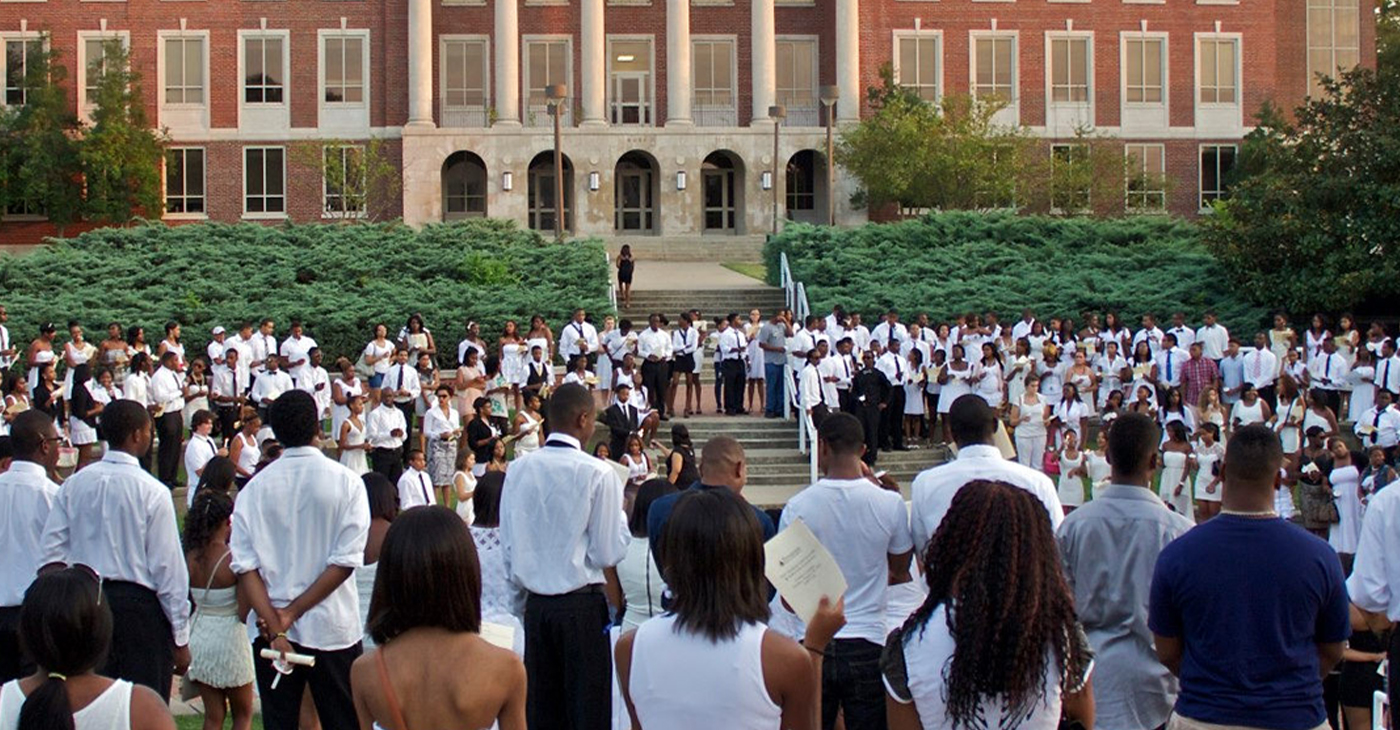
By Stacy M. Brown, NNPA Newswire Senior National Correspondent
@StacyBrownMedia
Tennessee State University (TSU), the state’s only public historically Black college and university (HBCU), faces a tumultuous future as Gov. Bill Lee dissolved its board, a move supported by racist conservatives and MAGA Republicans in the Tennessee General Assembly, who follow the lead of the twice-impeached, four-times indicted, alleged sexual predator former President Donald Trump. Educators and others have denounced the move as an attack on diversity, equity, and inclusion (DE&I) and a grave setback for higher education.
Critics argue that TSU’s purported financial mismanagement is a manufactured crisis rooted in decades of underinvestment by the state government. They’ve noted that it continues a trend by conservatives and the racist MAGA movement to eliminate opportunities for Blacks in education, corporate America, and the public sector.
Gevin Reynolds, a former speechwriter for Vice President Kamala Harris, emphasizes in an op-ed that TSU’s financial difficulties are not the result of university leadership because a recent audit found no evidence of fraud or malfeasance.
Reynolds noted that the disbanding of TSU’s board is not an isolated incident but part of a broader assault on DE&I initiatives nationwide. Ten states, including Tennessee, have enacted laws banning DE&I policies on college campuses, while governors appointing MAGA loyalists to university trustee positions further undermine efforts to promote inclusivity and equality.
Moreover, recent legislative actions in Tennessee, such as repealing police reform measures enacted after the killing of Tyre Nichols, underscore a troubling trend of undermining local control and perpetuating racist agendas. The new law preventing local governments from restricting police officers’ authority disregards community efforts to address systemic issues of police violence and racial profiling.
The actions echo historical efforts to suppress Black progress, reminiscent of the violent backlash against gains made during the Reconstruction era. President Joe Biden warned during an appearance in New York last month that Trump desires to bring the nation back to the 18th and 19th centuries – in other words, to see, among other things, African Americans back in the chains of slavery, women subservient to men without any say over their bodies, and all voting rights restricted to white men.
The parallels are stark, with white supremacist ideologies used to justify attacks on Black institutions and disenfranchise marginalized communities, Reynolds argued.
In response to these challenges, advocates stress the urgency of collective action to defend democracy and combat systemic racism. Understanding that attacks on institutions like TSU are symptomatic of broader threats to democratic norms, they call for increased civic engagement and voting at all levels of government.
The actions of people dedicated to upholding the principles of inclusivity, equity, and justice for all will determine the outcome of the ongoing fight for democracy, Reynolds noted. “We are in a war for our democracy, one whose outcome will be determined by every line on every ballot at every precinct,” he stated.
The post Tennessee State University Board Disbanded by MAGA Loyalists as Assault on DE&I Continues first appeared on BlackPressUSA.
#NNPA BlackPress
Braxton Haulcy and the Expansion of Walker|West Music Academy
May 24, 2023 – Walker West Music Academy gets an early start on expansion. Join us for a Wednesday episode of The …
The post Braxton Haulcy and the Expansion of Walker|West Music Academy first appeared on BlackPressUSA.

May 24, 2023 – Walker West Music Academy gets an early start on expansion. Join us for a Wednesday episode of The …
The post Braxton Haulcy and the Expansion of Walker|West Music Academy first appeared on BlackPressUSA.
-

 Activism4 weeks ago
Activism4 weeks agoOakland Post: Week of March 27 – April 2, 2024
-

 #NNPA BlackPress4 weeks ago
#NNPA BlackPress4 weeks agoBeloved Actor and Activist Louis Cameron Gossett Jr. Dies at 87
-

 Community1 week ago
Community1 week agoFinancial Assistance Bill for Descendants of Enslaved Persons to Help Them Purchase, Own, or Maintain a Home
-

 Activism3 weeks ago
Activism3 weeks agoOakland Post: Week of April 3 – 6, 2024
-

 Business1 week ago
Business1 week agoV.P. Kamala Harris: Americans With Criminal Records Will Soon Be Eligible for SBA Loans
-

 Activism2 weeks ago
Activism2 weeks agoOakland Post: Week of April 10 – 16, 2024
-

 Community1 week ago
Community1 week agoAG Bonta Says Oakland School Leaders Should Comply with State Laws to Avoid ‘Disparate Harm’ When Closing or Merging Schools
-

 Community6 days ago
Community6 days agoOakland WNBA Player to be Inducted Into Hall of Fame

